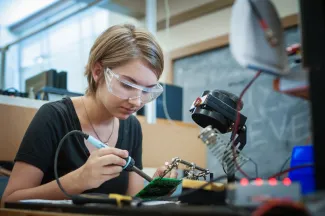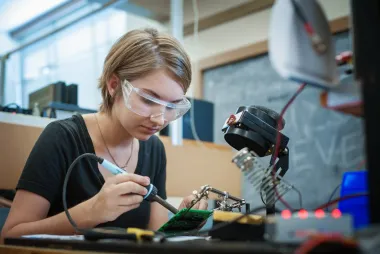
Natik Aggarwal
- Degree:
- Bachelor of Applied Science
- Grad year: 2021
- Program:
- Campus: Okanagan
Job: Co-founder of YCJ Venture Studio
A few years after graduating, Natik co-founded a software development firm that has since launched three products, including Prompt Genie, a tool for generating strong prompts so users can get the most out of AI chatbots. The UBC Electrical Engineering graduate says the skills he gained in engineering have supported his entrepreneurial endeavours, highlighting the importance of investing time in the first stage of the design cycle – understanding the problem – before generating potential solutions.
Why did you develop Prompt Genie?
In late 2022, ChatGPT began taking off, but many people were finding it difficult to use it effectively or to its full potential. We recognized the need for a product to develop great prompts.
What other products has your company developed?
We’ve developed Map.This, which creates visual mind maps (as well as Gantt charts and flowcharts) based on documents you’ve uploaded.
Just today I received a message from a researcher in Algeria who had written a thesis on how AI-assisted tools like Map.This could help students retain information.
Our third product, Looplytic, is an AI-powered conversation-based survey tool that enables users to get focused, specialized feedback on their offerings.
In traditional surveys, you set up a series of static questions. With Looplytic, you specify your information goals – what it is you are trying to understand – and the tool will then have a conversation with the survey respondent to gather valuable, personalized feedback.
It's being used in a range of applications, from a customer seeking feedback from beta readers on a draft book to application developers asking users what they are liking or not liking about an application and its features.
Any highlights from your time at UBC?
All the group projects! A highlight early in my degree was making a hovercraft – this was a lot of fun (and my team placed first on the competition, which is always rewarding). I also did a term abroad at the Technical University of Denmark, where I took software-focused courses as well as a course on machine learning.
As an entrepreneur, are you using the skills you developed in engineering?
Definitely! All those group projects helped me develop strong communication skills, including public speaking. Additionally, one of the crucial things I learned from engineering is how important it is to understand the problem first before diving into a solution. That sounds basic, but it’s not.
If you want to succeed as an entrepreneur, it’s essential to understand what your customers’ needs are, what they actually want, and what they are willing to pay for. It’s easy to make things, but to be successful you need to be making something that solves a real problem.




